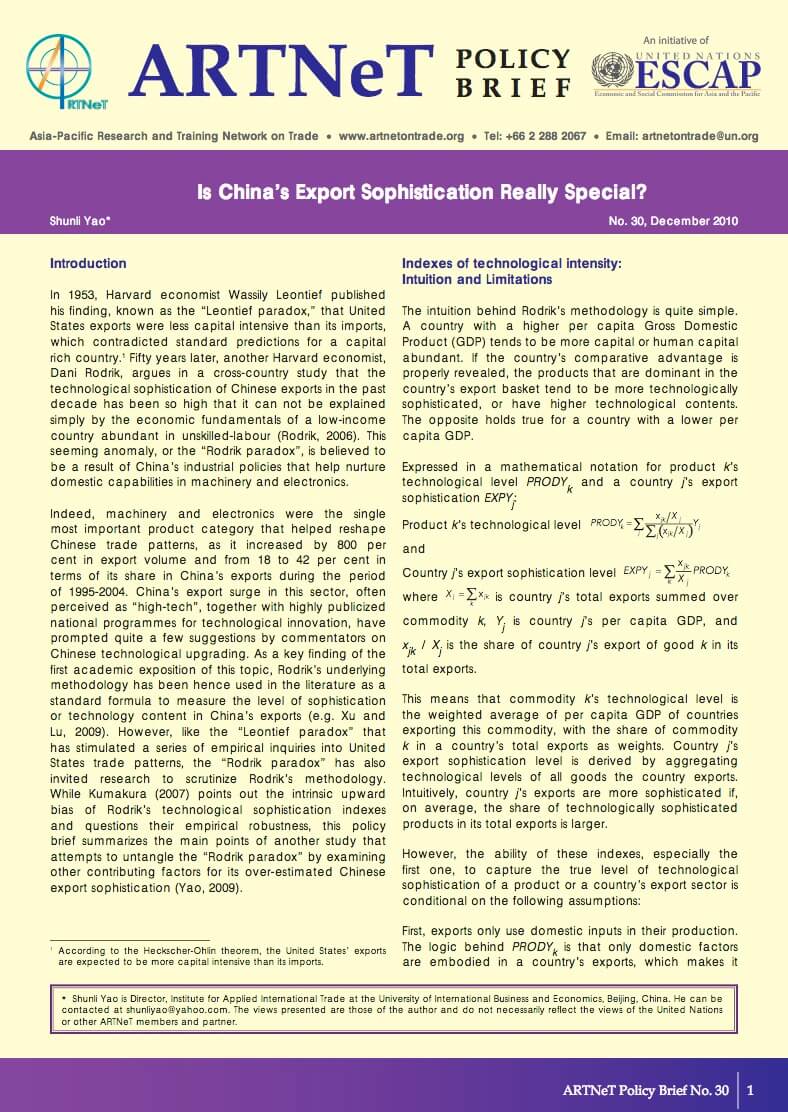Is China’s Export Sophistication Really Special?

In 1953, Harvard economist Wassily Leontief published his fi nding, known as the “Leontief paradox,” that United States exports were less capital intensive than its imports, which contradicted standard predictions for a capital rich country. 1 Fifty years later, another Harvard economist, Dani Rodrik, argues in a cross-country study that the technological sophistication of Chinese exports in the past decade has been so high that it can not be explained simply by the economic fundamentals of a low-income country abundant in unskilled-labour (Rodrik, 2006). This seeming anomaly, or the “Rodrik paradox”, is believed to be a result of China’s industrial policies that help nurture domestic capabilities in machinery and electronics.
Indeed, machinery and electronics were the single most important product category that helped reshape Chinese trade patterns, as it increased by 800 per cent in export volume and from 18 to 42 per cent in terms of its share in China’s exports during the period of 1995-2004. China’s export surge in this sector, often perceived as “high-tech”, together with highly publicized national programmes for technological innovation, have prompted quite a few suggestions by commentators on Chinese technological upgrading. As a key fi nding of the fi rst academic exposition of this topic, Rodrik’s underlying methodology has been hence used in the literature as a standard formula to measure the level of sophistication or technology content in China’s exports (e.g. Xu and Lu, 2009). However, like the “Leontief paradox” that has stimulated a series of empirical inquiries into United States trade patterns, the “Rodrik paradox” has also invited research to scrutinize Rodrik’s methodology. While Kumakura (2007) points out the intrinsic upward bias of Rodrik’s technological sophistication indexes and questions their empirical robustness, this policy brief summarizes the main points of another study that attempts to untangle the “Rodrik paradox” by examining other contributing factors for its over-estimated Chinese export sophistication (Yao, 2009).
